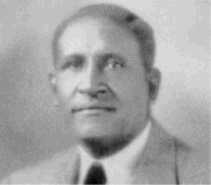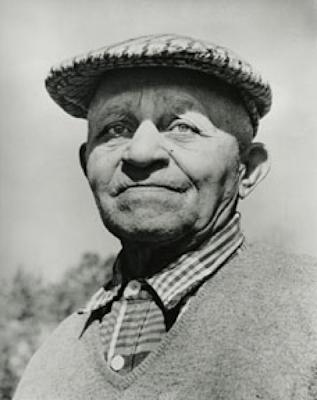The sport of golf was segregated, throughout
the entire United States, until The PGA deleted its infamous "Caucasian only"
clause that existed in the by-laws from 1934 to 1961.
Yet, African-Americans played a huge part in
how the game is played – even today.
Some of the trailblazers were:
·
George
Grant, a dentist from Boston, who designed the first golf tee registered by the
United States Patent Office, in 1899
·
Dewey
Brown, who learned the game as a caddie, and became a renowned golf club
designer and teacher during the 1920s and 30s. He was also the first
African-American member of The PGA; but his membership was revoked when the
organization realized that he was Black (he was very light-skinned)
· Joseph Bartholomew, a noted architect, who designed
and built several courses in the New Orleans area. However, because he was
Black, was not allowed to play on the courses he built. He eventually
constructed a seven-hole course for Black golfers on property he owned in
Louisiana.
 |
| George Grant and patent |
 |
| Dewey Brown |
 |
| Joe Bartholomew |
There were also some incredibly talented players, including Ted
Rhodes, Bill Spiller, Charlie Sifford and John Shippen. Their struggles eventually paved for the likes of Lee Elder, Pete Brown,
Calvin Peete and Tiger Woods. They dreamt of professional golf careers, in the
1920s through 50s, but were barred from most PGA Tour events.
 |
| Ted Rhodes |
 |
| Charlie Sifford |
 |
| Lee Elder |
 |
| Pete Brown |
 |
| Tiger Wods |
One such occasion, a photo of Bill Spiller
was famously captured, sitting alone and bereft, after being excluded from the
1952 San Diego Open, because of the color of his skin. This photo was also depicted on the cover of
a book, entitled Forbidden Fairways, written by retired pediatrician and
amateur golfer, Dr. Calvin Sinnette, which chronicles the history of African-Americans
and golf.
 |
| Bill Spiller, 1952 San Diego Open |
Also included in the book was the story of Ann Gregory, who won many United Golfers
Association (an African-American group) events and who became the first Black
woman to play in the United States Women's Amateur, in 1956.
In 2009, PGA of America tried to clear its conscience by bestowing posthumous memberships to Bill Spiller, Ted Rhodes and John
Shippen.
 |
| PGA Posthumous Membership Ceremony, 2009 |
John
Shippen was (most likely) the first American-born golf pro – not just
African-American pro – because until 1896, when John made his professional
debut at the US Open on Long Island, only European-born players had ever
competed. Despite a threatened boycott, John played in the tournament, coming
in fifth. He played in five more US
Opens and became the teaching pro at prominent, White country clubs, including Maidstone and
Aronimink.
 |
| John Shippen |
In
1931, John took a job, as the golf pro and groundskeeper at Shady Rest Country
Club, beautifully nestled in Scotch Plains Township, New Jersey.
 |
| University of South Carolina Golfers at Shady Rest |
Shady Rest offered all of the amenities. In addition to golf, members could enjoy tennis, horseback riding, skeet-shooting, attended locker rooms and a clubhouse dining room. What made this club unique was that it Black-owned, and was the first African-American country club in the United States.
Shady Rest attracted a well-educated, well-heeled clientele, who drove fancy cars, such as Packards and Studebakers, and paid a $15 to $25 annual membership fee to the club. Many young people met their spouses there at evening social events, where ‘Big Band’ entertainers, such as Duke Ellington, Count Basie, Cab Calloway, Ella Fitzgerald and Sarah Vaughan, regularly played. Also, W.E.B. DuBois spoke there; and the clubhouse was a popular venue for weddings, as well as fashion shows and luncheons, hosted by African-American community groups.
 |
| Duke Ellington & Ella Fitzgerald |
The neighborhood around the club was
predominantly African-American, but the club drew members from across Northern
and Central New Jersey, with guests, including Black sororities and fraternities,
driving in from as far as Manhattan and Brooklyn for a day in the country; as well as groups visiting from the South on longer vacations.
The clubhouse, which dated to the mid-1700s, began life as a farmhouse. It briefly served as a tavern until 1900, when the Westfield Golf Club turned the surrounding farmland into a golf course. When the Westfield club merged with a Cranford club, plans were drawn to build a new, 18-hole course at what would become the Echo Lake Country Club. When the owners decided to sell, a group of African-American investors called the Progressive Realty Co. bought the property in 1921 and opened Shady Rest.
For a few years, the club was riding high. However, a growing tax burden, the Great Depression, and conflicts between two groups of investors, led to financial problems. So, Scotch Plains Township acquired the Shady Rest property, through a tax lien foreclosure, in 1938; and the country club continued as a focal point of African-American social life through the 1940s and 1950s.
In
1964, the town took over operations of Shady Rest, renamed it Scotch Hills
Country Club, and opened it to the public. Over time, the clubhouse became
dilapidated. A new clubhouse was built;
and it is believed that there are now possible plans to renovate the original
one to house a senior center and an exhibit about Shady Rest’s history.
John Shippen retired in 1960. He sadly spent his last days alone and broke, and died in a Newark, New Jersey nursing home, in 1968. When he was posthumously honored by The PGA, this inspired Montclair State University professor and filmmaker, Larry Londino, to create the PBS documentary, A Place For Us: The Story of Shady Rest and America's First Golf Professional.
 |
| Scotch Hills Country Club |
John Shippen retired in 1960. He sadly spent his last days alone and broke, and died in a Newark, New Jersey nursing home, in 1968. When he was posthumously honored by The PGA, this inspired Montclair State University professor and filmmaker, Larry Londino, to create the PBS documentary, A Place For Us: The Story of Shady Rest and America's First Golf Professional.
 |
| Don Miller's oil painting of John Shippen |
Also, the artist, Don Miller, painted an oil portrait of John
Shippen; and a husband and wife couple, Thurman and Ruby Simmons, formed the
John Shippen Memorial Golf Foundation. Thurman is the chairman; and he and Ruby
manage the Foundation out of their home. Every year, they host a golf
tournament to raise funds for children, aged 9 to 17, at the multiracial
Shippen Golf Academy. Every child receives a set of clubs, a red shirt and a
tan cap with John Shippen's face and 1896 (the year John played in his first US
Open) on it. The Simmonses also led a drive to replace John’s inconspicuous
gravestone with a more prominent one that says: “John Shippen 1879-1968 The
First American Born African-American Golf Professional.”
It may have taken decades for African-Americans to be recognized
and included in golf and other ‘elite’ sports; but it is so nice to see that it
no longer matters where you are from, nor where you were educated, to be able
to learn, enjoy – and even excel – at them.
Sources: I Love Ancestry, NY Times, NJ.com, Golf Digest, Forbidden Fairways, Google Images, Flikr














This is a fascinating article Some of these players I had never heard of. Thanks for the post..
ReplyDelete